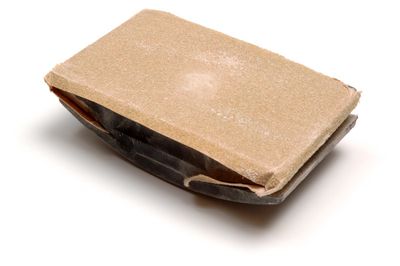
It's important to apply primer before painting because it protects the surface and enables the paint to adhere better. As a result of its chemical composition, the primer forms a binding layer, protects the material from mold and seals pores on the surface. Furthermore, primer eliminates stains and makes the paint job last longer. In addition, tinted primer can reduce the number of coats of paint you need to achieve a finished look.
Whether you're priming a porous substance such as wood or a smooth substance such as metal, you need to sand the substance beforehand. Sanding a surface removes the top glossy layer, allowing the substance to receive the primer. Without sanding the surface in advance, the new coat of paint won't stick to the previous layer. In addition to stripping the outer layer of gloss, you can also use sandpaper to correct imperfections and remove stains. Sanding ensures that the surface remains free of debris and that the finish is smooth and professional.
Advertisement
You need to choose the sandpaper grit size according to the material you're preparing to prime. When sanding wood, for example, start with coarse sandpaper, such as 80-grit, gradually increasing in fineness. Each time you advance to a higher grit size, you eliminate the scratch marks from previous sanding. When sanding a softer surface, such as plastic, you may need to start with a higher grit size, such as 120, to avoid excessive scratching. For auto repair and other metals, start with 60-grit paper if you need to sand down below the rust to repair deep scars. Then increase the grit to 120 to remove rust stains or shape body filler. Finally, just before you are ready to apply primer to the metal, smooth the car's surface with a 320-grit piece of fine sandpaper.

